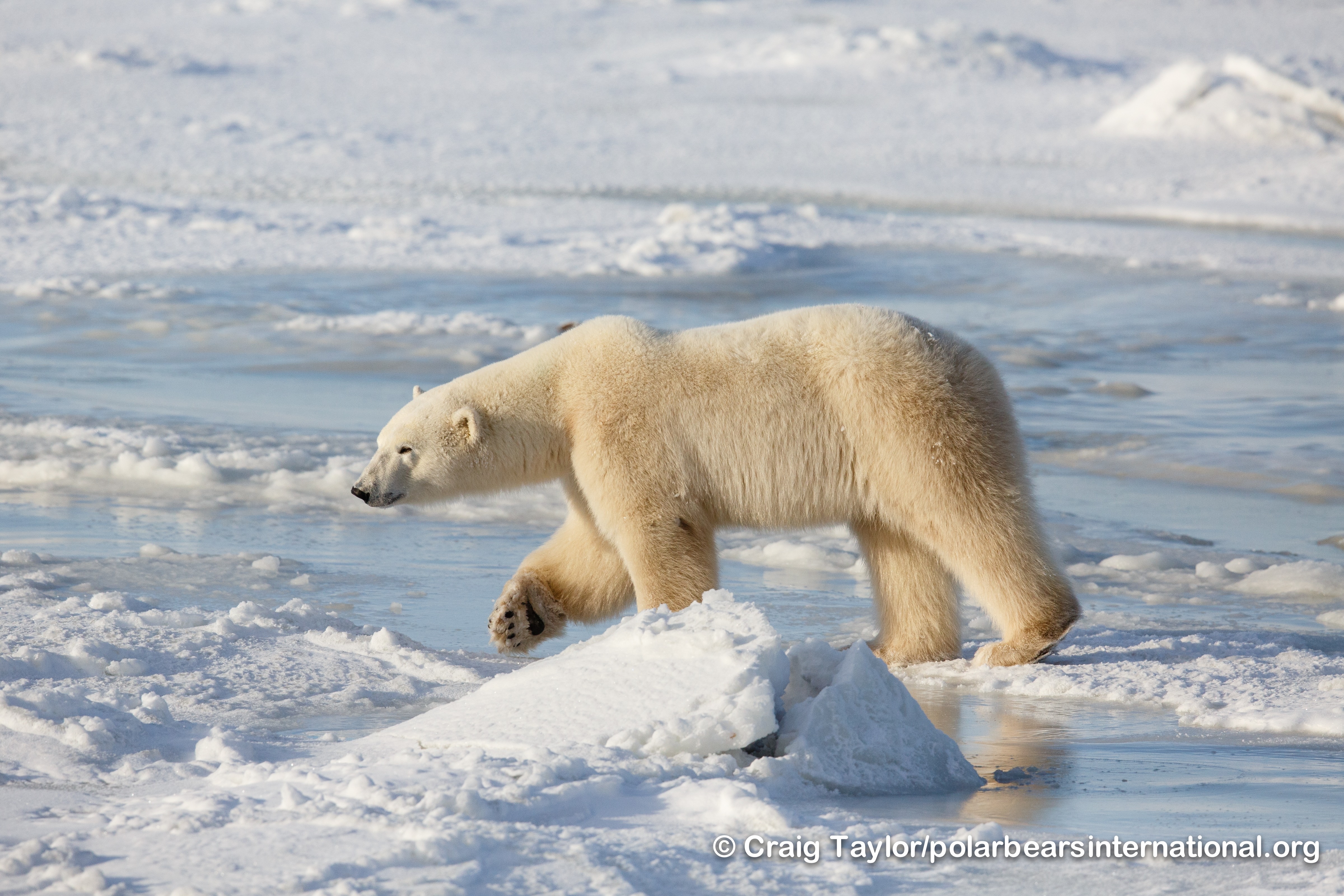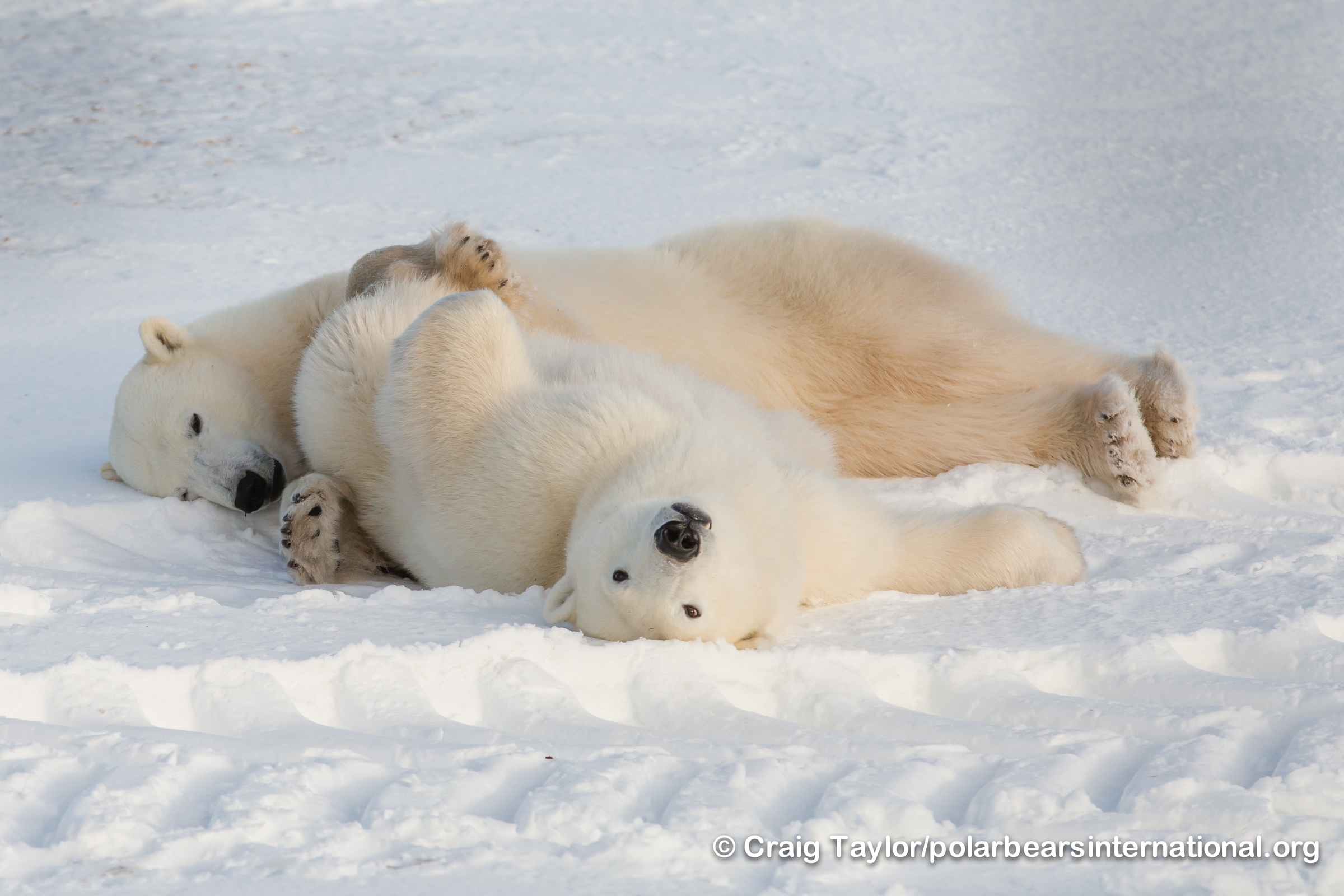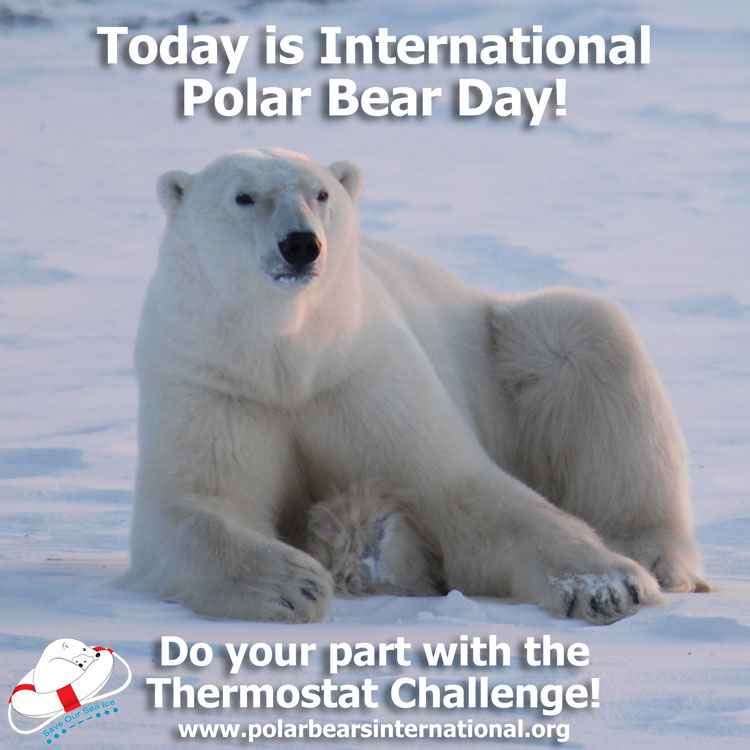“Keeping sea ice is important to all, not just polar bears. We can all work together to protect this planet, and polar bears, for future generations.”
Climate change has become a noticeable phenomenon for many. Changes in our climate are witnessed every day through heavy rain, drought, heat waves and rising sea levels (just to name a few). While the effects of global warming are extremely harmful to us as humans, they also have devastating impacts on other living species.
Over the years, polar bears have become an iconic symbol for global warming. The mammals are struggling to survive in parts of the world where human activity is ever-increasing through mining, shipping, pollution and human settlements. Polar bears have been the focus of researchers and scientists for decades due to being the animals that are at the heart of the sea ice melting. As we continue to burn fossil fuels, the sea ice cracks around the polar bears.
Alysa McCall, staff scientist and Director of Conservation Outreach at Polar Bears International (PBI), spoke to the IPF about exactly how vulnerable polar bears have become. PBI has been campaiging for the preservation of polar bears and the animal’s natural habitat, and Alysa specialises in studying polar bears’ distribution, habitat selection and maternal den studies. She is also involved in running events for International Polar Bear Day, which falls on 27 February every year.
Alysa told IPF about a long list of difficulting facing the polar bears as a result of global warming. She stressed that the regular consumption of gases are releasing “rampant amounts of gases into our atmosphere”, which in turn causes the sea ice in the Arctic to melt at an alarming rate. She also noted how regular amounts of gases, such as carbon dioxide, are contributing towards “thickening this blanket and trapping too much heat, which makes our planet uncomfortably warm too quickly”.
As this warm blanket thickens around the globe, the polar bears dependency on sea ice becomes harder to withhold. They’re extremely reliant on this ice as it is used as a platform to hunt their main prey; seals. The seals are ice-obligate, which means they need sea ice to bread on. Therefore, the loss of sea ice impacts the polar bear’s prey. Alysa concluded this point, by stating:
“Loss of sea ice leads to fewer seals being consumed and often more swimming and walking by the bears.”
The alternatives the bears seldom turn to during summer months are terrestrial foods, such as eggs. However, no terrestrial food will be sufficient enough for the immense body size of a polar bear. Alysa explained:
“Polar bears are still bears and will eat anything they can (bears love food!), but nothing has the caloric punch that seal blubber provides. Polar bears are marine mammals and simply cannot become terrestrial year-round.”
Deteriorating sea ice shifts the entire Arctic ecosystem particularly because the very base of the Arctic food chain depends on sea ice too. The algae below the ice supports the entire ecosystem.
“Sea ice is to the Arctic what soil is to a forest.”
Through PBI’s findings they’ve discovered some bears are forced to spend summer on the shore, which is uncommon because “they used to live on sea ice for their entire lives”. In fact, the bears in the Hudson Bay have to wait much longer for the ice to form, forcing them back to land, resulting in less hunting time. Unfortunately, such movement patterns will continue.
“Such trends in migration patterns will likely continue over the long-term in these areas.”
Sea ice is lost at different rates depending on aspects like the geography, water depth and wind. So far, in populations where PBI has documented the loss of sea ice, Alysa said they’ve found direct evidence of how climate change has decreased the population size of polar bears.
“We see smaller body sizes, smaller populations, fewer cubs being produced, and fewer cubs making it to adulthood.”
In a habitat such as a forest, common methods to conserve it would be to replant trees or build a fence for protection. Even though it may seem tough to conserve the melting sea, it’s not. Through PBI’s research they’ve found that by responding to GHG emissions, our greenhouse gas emissions “will bounce back to previous levels”. Alysa explained that they advice the public on conversation of sea ice as best as they can.
“When we talk to people about conserving sea ice, we talk about ways to reduce our carbon footprint. This can be changing how we commute (driving less), eating more local foods or saving energy in heating, among other solutions.”
For International Polar Bear Day, PBI promotes a #ThermostatChallenge. PBI asks people to turn down their thermostat by two degrees and to instead create a keep cozy and warm environment by practicing “Hygge”.
Hygge is a Norwegian word that the Danes co-opted and expanded, its literal translation is “coziness”. However, in Denmark the word means much more because it has transformed into being a movement. Alysa explained that the movement is about “creating a natural warm atmosphere and enjoying good things in life with good people”. Its practice involves being surrounded by family and friends, drinking hot chocolate and discussing life. Its ideology recalls something basic and simple that can be enjoyed in a warm atmosphere during the cold season of winter.
“Perhaps Hygge explains why the Danes are the happiest people in the world?”
As the Danes enjoy the practice Hygge, they also preserve our planets energy for its inhabitants. Essentially, by turning down the thermostat by two degrees, the Thermostat Challenge participants will save money on their energy bills. Although more importantly, in long run this movement reduces carbon emissions.
“One thing we are working towards is better highlighting the link between polar bears and people: what is good for polar bears ultimately leads to a healthier planet and healthier humans!”
Moreover, Alysa and her team are trying to develop a closer relationship between organizations like theirs, including scientists and researchers, and the public in order to educate people via photos and videos and make us realize that essentially what’s good for the polar bears is also good for us and the next generations. The impact of human activity on the planet cannot be questioned, at this point anyone with the capacity of reflection should think about what they are doing and try to make a change in the way the live.
What you can do:
Fundamentally, the International Polar Bear Day is an event created to increase awareness towards polar bears and the importance of the Artic sea ice. It is a day where people can feel inspired and informed to help and care in order to “do a little bit to help out polar bears which in turn helps our the whole planet”.
Want to educate yourself?
Learn more about the impact climate change has on these beautiful, majestic animals and sadly, vulnerable animals, by visiting Polar Bears International’s website.
Burning desire to get involved?
You can take the #ThermostatChallenge or can simply invite family members or friends over to discuss the real matters of life to Hygge.
Feeling generous?
You can adopt a bear and donate money here. Polar bears are tough to find on sea ice and expensive to study. Your donation can go into helping the research development and awareness programs at PBI.
Want to take action?
If you can’t donate any money, then you could sign the petition for a fair carbon fee that will help to offer a possible fair competition to renewable energies.
Want some more information?
If you’re feeling curious and would like some answers at the soonest, go to the ‘Polar Bear Questions’ Facebook page created by Thea Bechshøft, a Danish researcher which has been studying the stress in polar bears.
Alysa added that this special day should be a leading example of the effort that we could all make every day without changing our comfortable lifestyle:
“Being a caring and responsible citizen of Earth does not mean changing your entire lifestyle or reducing your quality of life! Protecting future generations of people and polar bears really is not difficult, but we all need to work together to accomplish this goal.”




